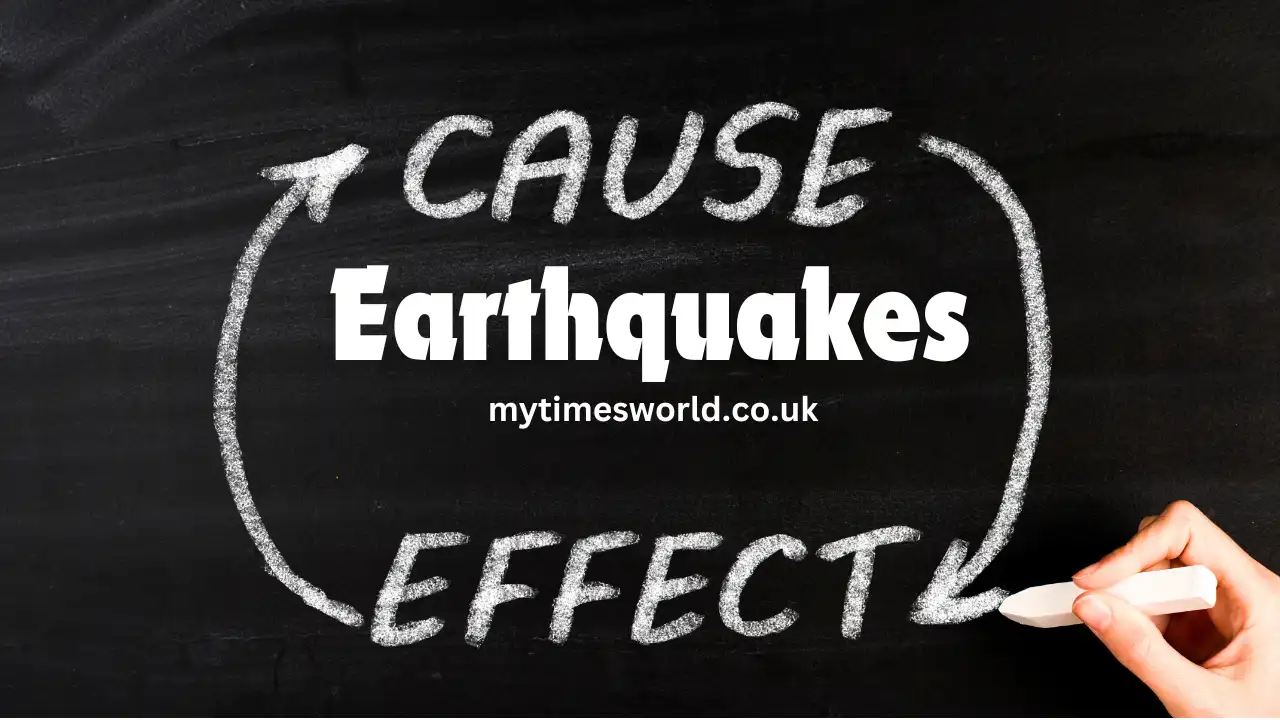Introduction to Earthquakes
Earthquakes are one of the most powerful and unpredictable natural disasters on Earth. These sudden shakes of the ground have fascinated and terrified humans for centuries, leaving behind destruction and chaos. While modern science has helped us understand earthquakes better, they remain unpredictable and often strike with little warning. In this article, we’ll dive into what causes earthquakes, how they are measured, their effects, and most importantly, how to stay safe during one.
What Are Earthquakes?
Definition of Earthquakes
An earthquake is the shaking of the surface of the Earth caused by a sudden release of energy from the Earth’s lithosphere. This energy release is typically caused by the movement of tectonic plates beneath the surface, but there are several other factors that can lead to an earthquake.
Why Do Earthquakes Occur?
Earthquakes happen when stress builds up along faults or fractures in the Earth’s crust. Over time, this stress becomes too great, and the rocks break or slip, sending seismic waves through the ground. These waves cause the ground to shake, sometimes gently and other times violently, depending on the magnitude of the quake.
The Science Behind Earthquakes
Tectonic Plates and Their Movements
The Earth’s surface is made up of large pieces called tectonic plates, which float on the semi-fluid asthenosphere beneath them. These plates are constantly moving, though very slowly. When they collide, pull apart, or slide past each other, stress builds up, and eventually, an earthquake occurs.
Types of Faults and How They Contribute to Earthquakes
There are several types of faults, or cracks in the Earth’s surface, where earthquakes are likely to occur:
- Normal faults: These occur when the crust is being pulled apart.
- Reverse faults: These happen when the crust is being compressed.
- Strike-slip faults: These occur when two tectonic plates slide past each other horizontally.
The type of fault influences the nature of the earthquake.
Earthquake Waves: Primary and Secondary
When an earthquake occurs, it releases seismic waves. There are two main types:
- Primary waves (P-waves): These are the fastest seismic waves and travel through solids, liquids, and gases.
- Secondary waves (S-waves): These are slower than P-waves and can only travel through solids, making them more destructive when they reach the surface.
Causes of Earthquakes
Natural Causes
- Tectonic Movements: The most common cause of earthquakes, occurring due to the shifting and collision of tectonic plates.
- Volcanic Activity: Sometimes, earthquakes can be triggered by the movement of magma beneath the Earth’s surface during volcanic eruptions.
Human-Induced Causes
- Mining: Large-scale mining operations can destabilize the Earth’s crust and trigger minor earthquakes.
- Reservoir-Induced Seismicity: The pressure of water in large reservoirs can cause faults in the Earth’s crust to slip, leading to earthquakes.
How Are Earthquakes Measured?

The Richter Scale
The Richter Scale, developed in 1935, was the first widely used method for measuring the magnitude of earthquakes. While it’s still well-known, modern scientists often use more precise methods today.
The Moment Magnitude Scale
This scale measures the total energy released by an earthquake, providing a more accurate reflection of its size, especially for larger earthquakes.
Seismographs and How They Work
Seismographs are instruments that measure the vibrations caused by earthquakes. They record the intensity, duration, and frequency of the ground motion, allowing scientists to pinpoint where and how strong an earthquake was.
Major Earthquake Zones Around the World
The Pacific Ring of Fire
This area, encircling the Pacific Ocean, is one of the most seismically active regions in the world. It’s where several tectonic plates meet, making it prone to frequent and powerful earthquakes.
Other Significant Earthquake Zones
Other earthquake-prone regions include the Himalayan Belt, the Mediterranean-Asian Seismic Belt, and parts of the United States, particularly California.
The Effects of Earthquakes
Destruction of Infrastructure
Earthquakes can cause buildings, bridges, and roads to collapse, leading to significant loss of life and property.
Human and Environmental Impact
In addition to physical damage, earthquakes can lead to fires, landslides, and floods, making recovery efforts even more difficult.
Tsunamis: A Secondary Effect of Earthquakes
Earthquakes that occur underwater can displace large amounts of water, creating massive waves known as tsunamis, which can devastate coastal areas.
Famous Earthquakes in History
1906 San Francisco Earthquake
One of the most devastating earthquakes in U.S. history, this quake leveled much of San Francisco and caused widespread fires.
2011 Tōhoku Earthquake in Japan
This earthquake and the resulting tsunami caused massive destruction and the Fukushima nuclear disaster, highlighting the far-reaching effects of seismic activity.
Predicting Earthquakes: Is It Possible?
Current Technology and Limitations
While scientists can identify areas prone to earthquakes, predicting the exact time and location of a quake remains nearly impossible due to the complex nature of seismic activity.
Early Warning Systems
Countries like Japan have developed early warning systems that detect P-waves and provide a few seconds of warning before the more destructive S-waves arrive.
Safety Tips During an Earthquake

What to Do Indoors
- Drop, cover, and hold on. Get under sturdy furniture and protect your head and neck.
- Stay away from windows, mirrors, and heavy objects that could fall.
What to Do Outdoors
- Move to an open area away from buildings, trees, and power lines.
- Stay on the ground until the shaking stops.
What to Do While Driving
- Pull over to a safe area, away from bridges and overpasses.
- Remain in the vehicle until the shaking stops.
Post-Earthquake Safety
Checking for Injuries and Damage
- Check yourself and others for injuries, and seek medical help if necessary.
- Inspect your surroundings for hazards like gas leaks or structural damage.
Avoiding Aftershocks
- Aftershocks can follow the main earthquake, so be prepared to drop, cover, and hold on again.
Earthquake Preparedness
Creating an Emergency Kit
- Include water, non-perishable food, a flashlight, batteries, and first-aid supplies in your kit.
- Make sure it’s easily accessible.
Earthquake-Proofing Your Home
- Secure heavy furniture to walls, and install latches on cabinets to prevent them from opening during an earthquake.
Family Emergency Plan
- Have a communication plan and meeting point in case family members are separated during an earthquake.
The Role of Governments and Organizations in Earthquake Management
Disaster Relief Programs
Governments and international organizations provide aid and relief after major earthquakes, helping rebuild infrastructure and support affected communities.
Building Regulations and Codes
Stricter building codes in earthquake-prone regions help minimize damage and save lives.
The Future of Earthquake Research
Advancements in Technology
With advancements in seismology and AI, scientists are working on improving earthquake detection and potentially developing prediction methods.
Potential for Earthquake Prediction
Though prediction remains elusive, continuous research may one day provide accurate warnings.
Conclusion
Earthquakes are a reminder of the powerful forces that shape our planet. While we can’t prevent them, understanding their causes, effects, and how to stay safe can save lives. With preparedness, awareness, and evolving technology, we can reduce the risks and better protect ourselves when these natural disasters strike.
FAQs
- Can earthquakes be predicted?
Currently, earthquakes cannot be accurately predicted, though scientists are working on improving early warning systems. - What is the best way to stay safe during an earthquake?
Drop, cover, and hold on. Find sturdy shelter and protect yourself from falling objects. - Why do aftershocks happen after an earthquake?
Aftershocks occur as the Earth’s crust adjusts to the changes caused by the main earthquake. - What causes tsunamis after an earthquake?
Underwater earthquakes can displace large volumes of water, creating massive waves known as tsunamis. - What are the most earthquake-prone areas in the world?
The Pacific Ring of Fire, parts of the Himalayas, and areas of the United States like California are among the most earthquake-prone regions.







Be First to Comment